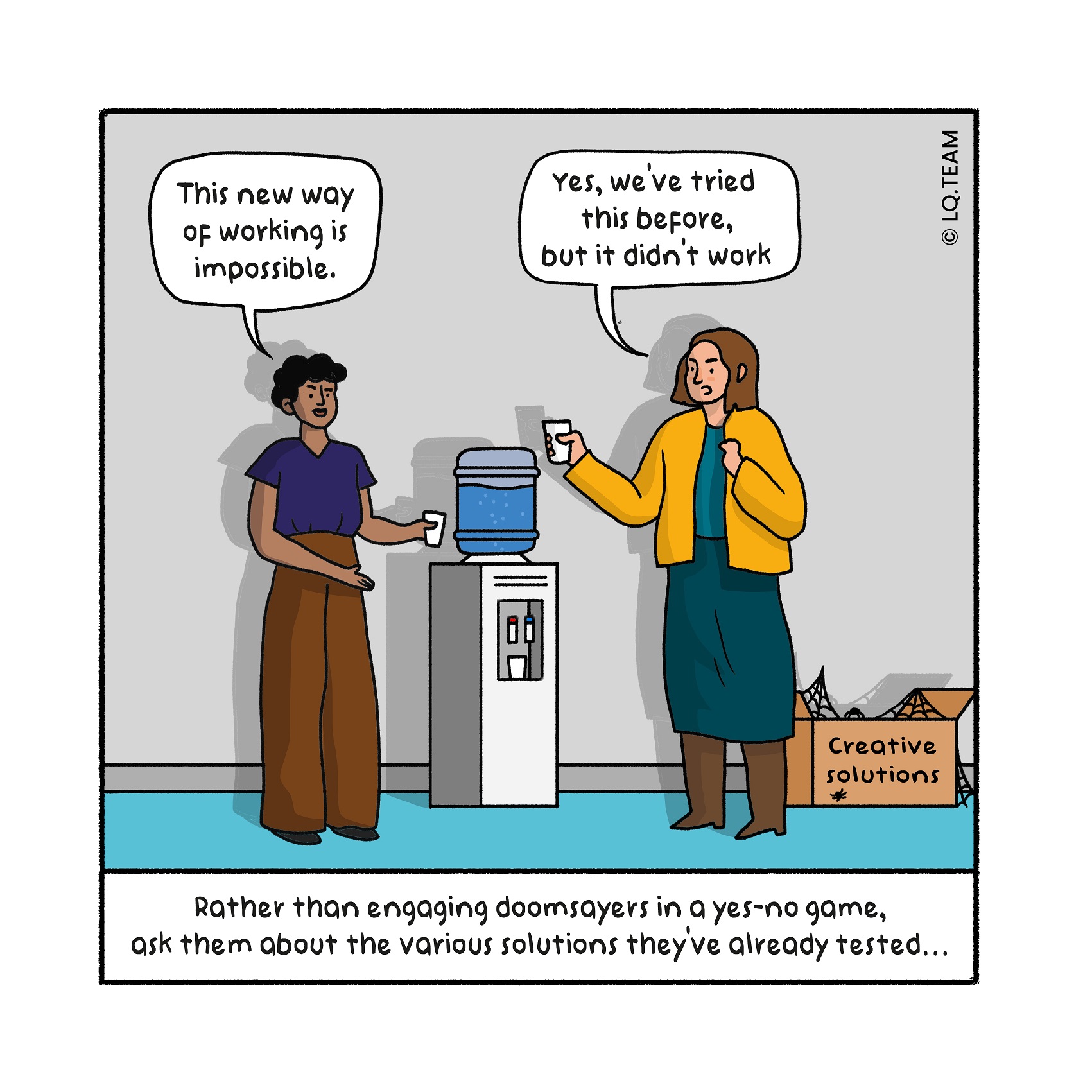
Nut to crack: How do you get doomsayers into first gear?
“This is impossible.” “We’ve tried this before, but it doesn’t work.” These are recognisable comments from individuals who are not getting into gear be- cause they see obstacles on the road to transformation. And yes, resistance like this is energy, but not necessarily the kind of energy you want. How do you activate doomsayers? What helps?
Nutcracker: Resist the temptation to get into the content
If you are being told by certain individuals that, “this is impossible… this can never be done… this will not work”, but you are convinced that the change will work, your first inclination may be to explain why the other person is wrong. Resist that temptation, and try a different route instead. Focus on the diligence and depth of the problem analysis and the direction of the solution by the other person. Ask how much the other person has done to make the change work, which solutions they have already tested and which can still be tested. The following example illustrates how you can redirect the energy of pessimists by reacting differently.
Real-life example: Focus on what is possible
The board of an international dairy cooperative has installed many selfmanaging teams to achieve a cost reduction of 40 million euros. It soon becomes apparent that team members are trying to convince the management that the intended savings are just not feasible. Complaints are pouring in about the impossibility of the targets. This frustrates the management because they are firmly convinced that this is possible. Why aren’t teams more creative? Why are they giving up so easily? So frustration grows on both sides. Then the management team takes a decision. They organise a meeting in which each of the teams presents their progress. Teams come armed with arguments about why the assignment is not feasible. During the meeting, the management opts for an unexpected way of responding. Instead of arguing with the teams about the content, they ask in depth about the strength and diversity of solutions that the teams have test ed and can still test. Teams are sent back to the drawing board whenever this proves insufficiently robust.
This new way of responding by management creates a new standard of behaviour. It becomes clear that raising problems without offering an alternative is unacceptable. A new dynamic emerges. Many teams enjoy being more creative and resourceful than management. They come up with more significant ideas, and one team even proposes to raise the target. Positive energy flows to both parties, and the intended target will eventually get within reach.
Tip for change leader
Action is reaction. By adjusting your response, the other person can only respond dif ferently. The Rose of Leary6 can help you to adapt your behaviour and thus transform ineffective conversation dynamics.
Tip for change enabler
Coach business leaders to ask exploratory questions instead of entering into a debate on content. This way, the responsibility and energy for finding the answer remain with the appropriate person.
Kernel: Action is reaction
Your action is crucial for other people’s reaction. You can reinvigorate nega- tive thinkers by staying away from the content and setting requirements for problem analysis and the approach to solution generation. If you have not read Challenge 6 about challenging resistance in a group yet, it may interest you.
